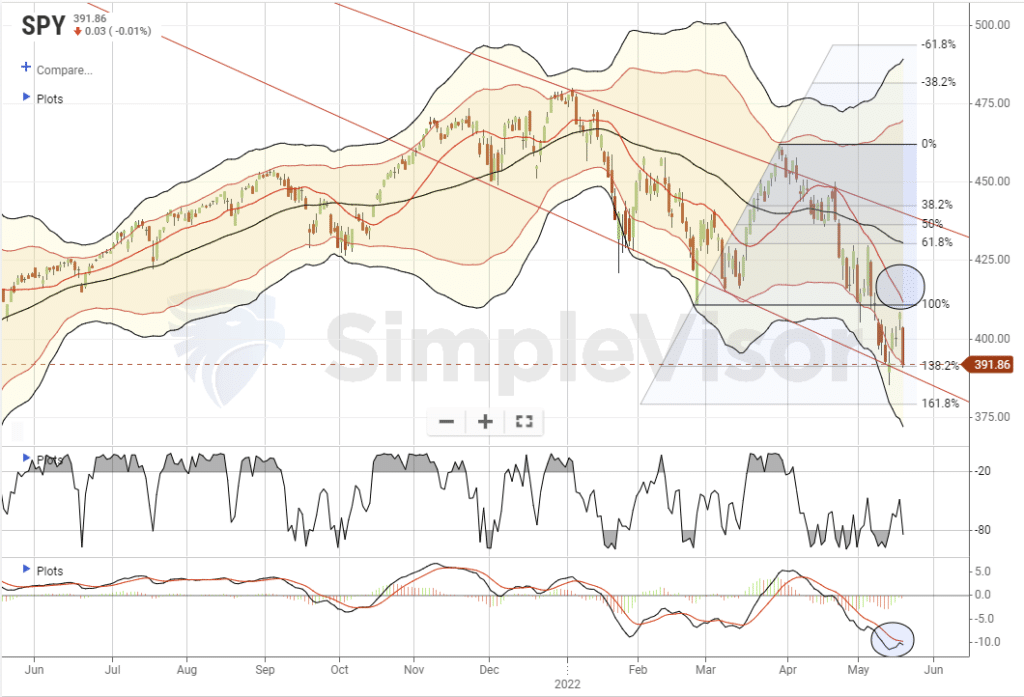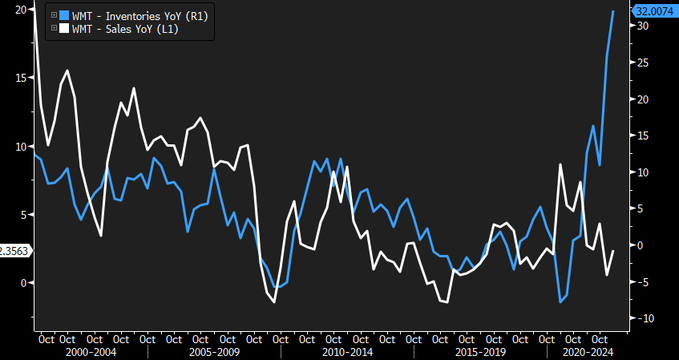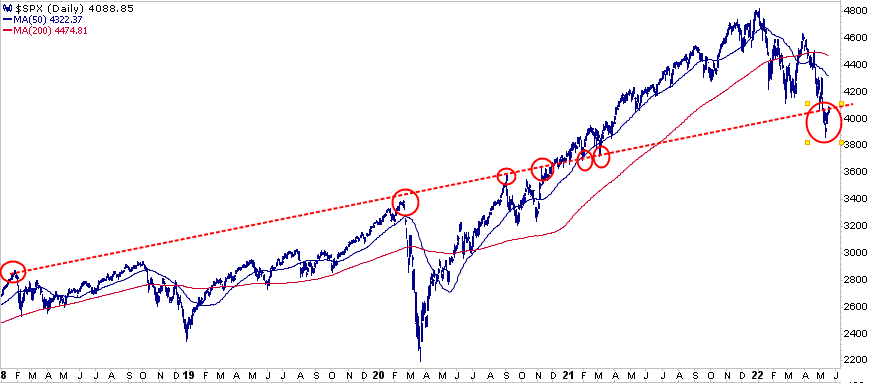Another day and another stern warning that consumers are struggling. Below we provide details on Target’s earnings which drove the stock down about 25%. Like Walmart, inflation increases Target’s costs and limits consumers’ purchasing power. As we have noted, wages have risen but not nearly enough to compensate for higher food and energy costs.
Consumers are being forced to limit purchases of other goods and sharply increase credit card debt. As we share below, credit card debt is growing at the fastest pace in 20 years. In yesterday’s Commentary, we ended with a critical statement that bears repeating: “Personal consumption accounts for two-thirds of GDP!” If the consumer is in trouble, the economy is as well.
This morning we have several more retailers reporting which could give us more clues about the state of consumers.


What To Watch Today
Economy
- 8:30 a.m. ET: Philadelphia Fed Business Outlook Index, May (15.0 expected, 17.6 during prior month)
- 8:30 a.m. ET: Initial jobless claims, week ended May 14 (200,000 expected, 203,000 during prior week)
- 8:30 a.m. ET: Continuing claims, week ended May 7 (1.320 million expected, 1.343 during prior week)
- 10:00 a.m. ET: Existing Home Sales, April (5.65 million expected, 5.77 million during prior month)
- 10:00 a.m. ET: Existing Home Sales, month-over-month, April (-2.1% expected, -2.7% during prior month)
- 10:00 a.m. ET: Leading Index, April (0.0% expected, 0.3% in during prior month)
Earnings
Pre-market
- BJ’s Wholesale Club (BJ) to report adjusted earnings of $0.71 on revenue of $4.22 billion
- Kohl’s (KSS) to report adjusted earnings of $0.71 on revenue of $3.71 billion
- Eagle Materials (EXP) to report adjusted earnings of $1.77 on revenue of $403.31 billion
Post-market
- Ross Stores (ROST) to report adjusted earnings of $1.00 on revenue of $4.54 billion
- VF Corp (VFC) to report adjusted earnings of $0.46 on revenue of $2.83 billion
- Palo Alto Networks (PANW) to report adjusted earnings of $1.68 on revenue of $1.36 billion
Market Trading Update – A Horrible Reversal
Just when it looked like it might be safe to re-enter the water, Target reports earnings that sends a shockwave through the market as consumers are clearly retrenching. Such suggests the Fed is way too late in hiking rates, and a recession may be much closer than previously expected.
The market rallied right into overhead resistance and then retraced all the gains from the last 3-days in a single day. This is not a great sign and after adding some value-based exposure we closed out our index position to raise some cash and return to a more defensive posture.
While the market remains oversold, sentiment is extremely negative, and stocks are pushing a more extreme deviation, the price action remains unhealthy. We are going to wait for some confirmation before putting any other cash to work.

Wall Street Is Losing Faith
“The downgrades are picking up. On Monday, 70 more stocks received target downgrades than upgrades, ranking in the bottom 2.5% of all days since 2010. It was the largest number of net downgrades since April 2020.
By the time a 70-day average of net price target changes fell to the current level, it’s been at about the peak of selling pressure during past corrections.” – Sentiment Trader

Target Is Having a 25% Off Sale
In Wednesday’s Commentary, we led with a discussion of Walmart’s disappointing earnings. In their case, inflation increases its expenses and hurts its customers’ ability to spend. Target followed Walmart with similar news, and its stock fell by over 25%. Target’s EPS was $2.19, well short of estimates for $3.06. Like Walmart, Target’s sales were higher versus estimates. In both cases, sales growth was less than the inflation rate.
We think it is helpful to share a few quotes from Target’s CEO Brian Cornell to highlight the difficulty large retailers are having in the current high inflationary environment.
“Throughout the quarter, we faced unexpectedly high costs, driven by a number of factors, resulting in profitability that came in well below our expectations, and well below where we expect to operate over time,”
“…lower-than-expected sales of discretionary items from TVs to bicycles”
“We never expected the kind of cost increases in freight and transportation that we’re seeing right now,”
The Bottom Line
The bottom line is that consumers are being forced to spend more money on food, gas, and other necessities, leaving less money available for many of the other products stores like Target and Walmart sell. At the same time, wages, transportation, and inventory costs are rising rapidly, and retailers are increasingly struggling to pass on those higher costs to their customers. Equally important, inventories are starting to stack up, as we show below. This will result in fewer new orders, which will weigh on the manufacturers of their goods. Here is what Walmart’s CEO had to say on the topic:
“We like the fact that our inventory is up because so much of it is needed to be in stock on our side counters but a 32% increase is higher than we want. We’ll work through most or all of the excess inventory over the next couple of quarters”

When Resistance Becomes Support And Then Resistance
The graph below shows a trend line from 2018 that has both supported the market and later proved to be a level of resistance. As we circle, the trend line acted as resistance twice before the Pandemic and twice on its initial rebound in later 2020. Upon breaking through the resistance, and testing it twice, the market soared. With the recent decline, the price of the S&P 500 went right through the resistance. The rally of the last few days has the price touching the underbelly of the trend. Will it act like resistance as it did, or will the rally continue with the trend line proven to be no longer meaningful?

The Fed is Far Behind
The Fed has now hiked rates by 0.75%, yet it remains grossly behind the inflation rate. As we show below, the gap between CPI and the Effective Fed Funds Rate is at its widest level since at least 1960. It also dwarfs the experiences of the double-digit inflation periods of the 70s and 80s.

Please subscribe to the daily commentary to receive these updates every morning before the opening bell.
If you found this blog useful, please send it to someone else, share it on social media, or contact us to set up a meeting.
Also Read

















